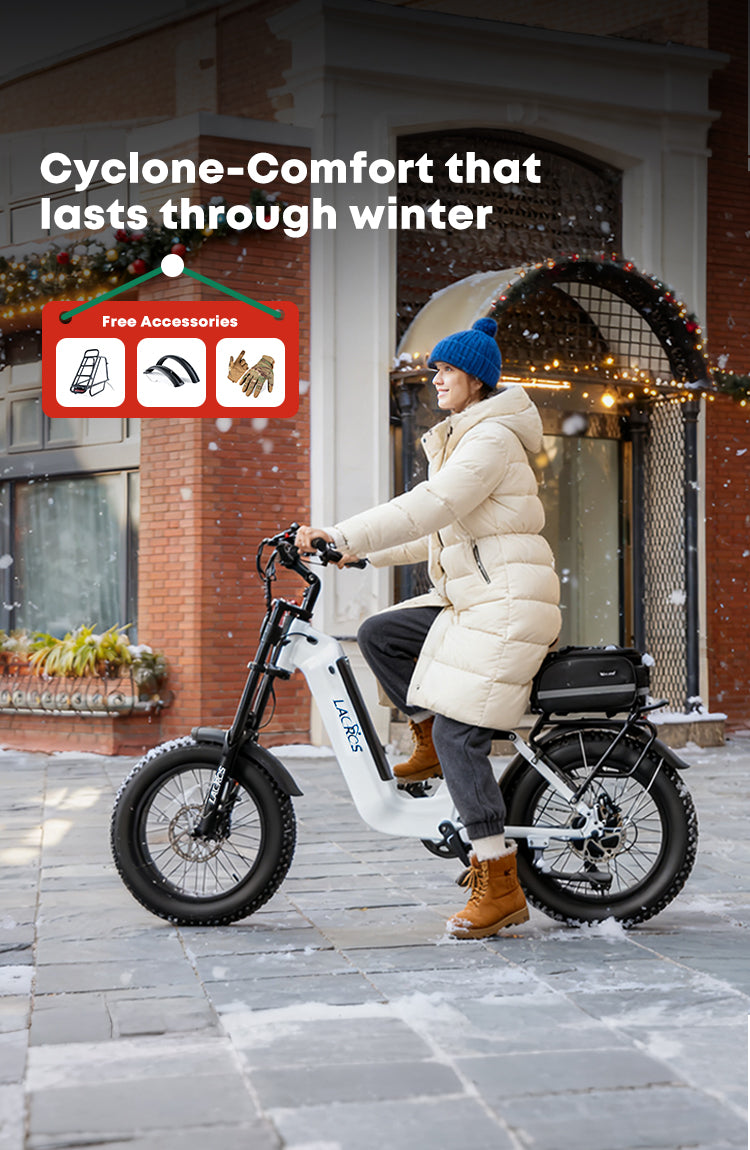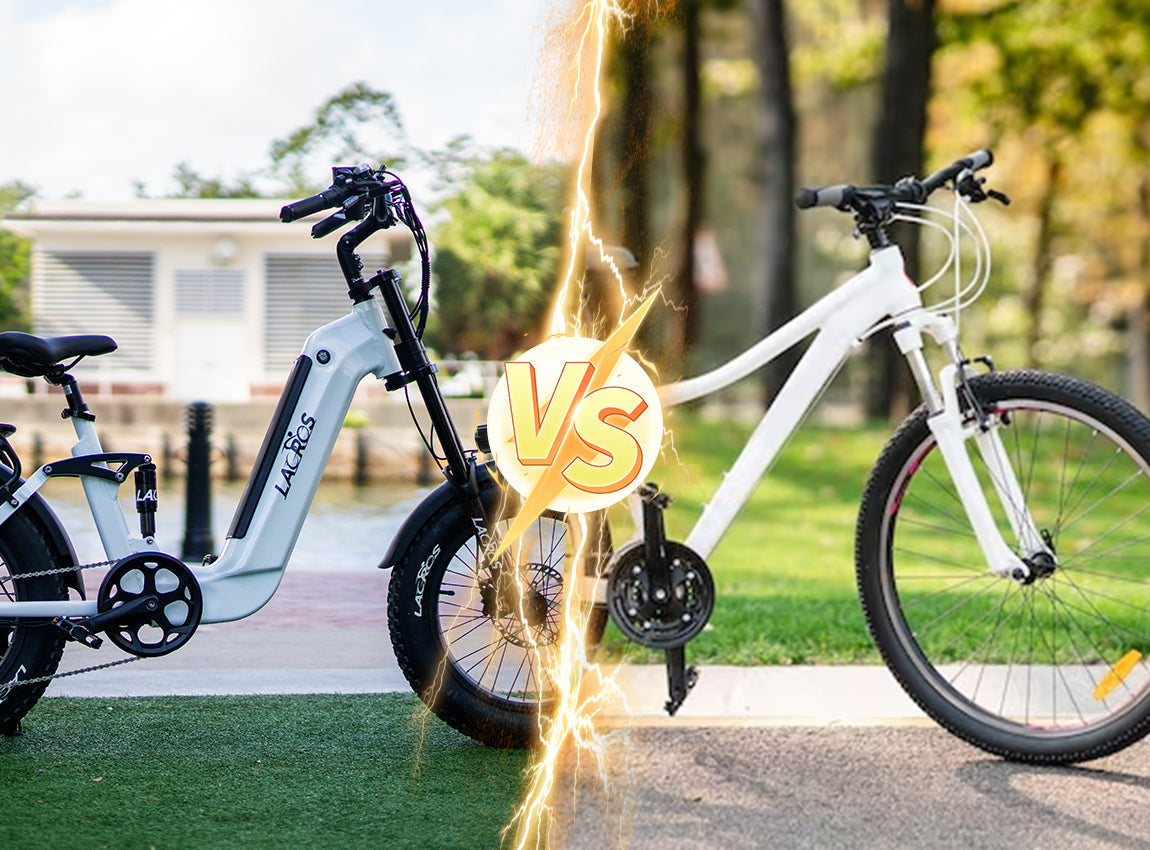Electric bikes, also known as e-bikes, have become increasingly popular among commuters and leisure riders. One common question remains for new riders: are electric bikes better than regular bikes?
The answer depends on your cycling experience and the type of e-bike you choose. When comparing ebikes vs regular bikes, factors such as motor type, weight, and handling make a significant difference.
What Is an Electric Bike and How Does It Work?
An electric bike works like a standard bicycle but includes a motor, rechargeable battery, and sensors that control motor assistance. Most e-bikes use one of two systems: torque sensing or cadence sensing.
Torque sensing systems add power proportional to how hard you pedal, creating a very natural, responsive feel — much like riding a traditional bike with extra boost.
Cadence sensing systems activate the motor when the pedals are turning, regardless of pressure, which may feel less intuitive initially.
E-bikes may have front-, mid-, or rear-drive motors. Mid- and rear-drive models feel more balanced and closer to a standard bike, while front-drive e-bikes may take some getting used to. All Lacros ebikes are rear-wheel drive, making them especially suitable for beginners.

When considering ebikes vs regular bikes, motor placement significantly affects handling and riding comfort.
Also read: What Is an Electric Bike and Why Everyone’s Talking About It
Why Riding an E-Bike Can Feel Different at First
For riders with previous cycling experience, adjusting to an e-bike is generally straightforward. However, complete beginners might find e-bikes slightly harder initially.
The pedal-assist engages as soon as you start pedaling, which may surprise new riders. With practice, most adapt quickly and enjoy a smoother, more powerful ride.
If you are deciding between ebikes vs regular bikes, it’s best to first get comfortable on a standard bike to learn balance, braking, and handling before switching to an e-bike.
Also read: Are Folding Bikes Harder to Ride? An Honest Look for Beginners
E-Bikes vs. Regular Bikes: Key Differences in Handling
Quick Comparison: E-Bikes vs. Regular Bikes
| Aspect | E-Bike | Regular Bike |
|---|---|---|
| Weight | Heavier | Lighter |
| Effort | Less | More |
| Acceleration | Faster | Rider-powered |
| Climbing | Easy | Hard |
| Handling | Slightly heavy | Agile |
| Learning | Needs adjustment | Easier |
When evaluating are electric bikes better than regular bikes, the main differences lie in weight, power, and acceleration. E-bikes are heavier due to the motor and battery, which affects starting, stopping, and turning. Additional torque allows faster acceleration, so learning smooth throttle control or pedal-assist response is important.
Once you understand how your e-bike behaves, riding becomes second nature — and in many cases, easier than a traditional bike.
Also read: How do I choose a torque transducer on my e-bike?
Who Benefits Most from Riding an E-Bike?
E-bikes are ideal for:
- Riders returning to cycling after years away
- Commuters seeking a faster, low-effort alternative to driving
- Anyone wanting to extend their range without overexertion
- Experienced cyclists aiming for longer rides or steeper terrain
While e-bikes introduce a learning curve, they make cycling accessible to more people. Understanding ebikes vs regular bikes helps identify which model suits your needs best.
Tips for First-Time E-Bike Riders
- Start on a low assist level to feel how the motor responds to pedaling
- Practice braking and cornering in a safe, open area
- Get familiar with your bike’s weight and balance at low speeds
- Try a standard bike first if you’ve never ridden before — it helps build key skills and confidence
Patience and consistency are key to becoming comfortable with the added power of an e-bike.
Explore our range of electric bikes designed for comfort, reliability, and real-world performance. Discover how smooth an e-bike can feel — visit the Lacros Online Store to learn more or book a test ride today.
Q&A: Common Questions About Riding Electric Bikes
Q: Is it harder to learn to ride an e-bike if I’ve never used a bike before?
A: Yes, a little. It’s best to start on a regular bicycle to learn balance and handling before moving to an e-bike.
Q: Does the type of motor or sensor matter?
A: Absolutely. Torque-sensing mid-drive e-bikes feel most natural, while front-drive or cadence-based systems may require extra adjustment.
Q: Are e-bikes easier once you get used to them?
A: Definitely. For most riders with basic cycling experience, e-bikes feel easier, smoother, and less tiring after just a few rides.
Q: Are e-bikes safe for beginners?
A: Yes, as long as you take time to learn gradually, start on low assist settings, and practice basic bike handling.
Conclusion: Are Electric Bikes Harder to Pedal or Simply Different?
Electric bikes aren’t necessarily harder to ride — they’re simply different.
For riders with basic cycling skills, they provide an easy, comfortable, and efficient ride. For complete beginners, the extra power and responsiveness may take some adjustment.
Once you understand how the motor behaves and gain confidence, you’ll find that are electric bikes better than regular bikes — they make cycling not only easier but more enjoyable than ever.





Share:
How to Sell Your Electric Bike Online and Get the Best Price
Are Ebikes Considered Motorized?